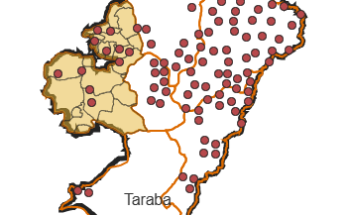
This study investigates suitable sites for municipal Solid Waste disposal in Abuja Municipal Area Council (AMAC) and Bwari Area Council, Abuja. The main sites of the municipal solid waste dumpsites covering important regions of AMAC, and Bwari Area Council Abuja were designated for collecting air quality data. The sampling was done at major dumpsites located around residential areas in the study area. Three (3) visits were performed on all the sites for primary data collection and the average values for respective parameters were recorded at each sampling location. Airborne particulate matter (PM2.5 and PM10), carbon dioxide (CO2), formaldehyde (HCHO), temperature and humidity were measured simultaneously at source. All measurements were done in 1-hour mean based on limits set by the United States Environmental Protection Agency (EPA) and the Nigerian Federal Ministry of Environment (FMEnv). Sampling of air pollutant levels was performed in-site measurement using calibrated Hand-held Temptop M2000 2nd Generation multi-functional detector and each location was geo-referenced using a handheld GARMIN GPS device. The air quality detector was positioned at 1.5 m height above the ground level to measure PM2.5 (µg/m3), PM10 (µg/m3), CO2 (ppm), HCHO (mg/m3), temperature (0C) and humidity (%). The indiscriminate disposal of waste in AMAC and Bwari Area Council of the Federal Capital Territory shows the type of menace of open disposal of solid waste which defaces the aesthetics of the urban centre, and health threats it poses to the inhabitants of these areas. The land use maps generated for the study area were used to understand the dominant land use and to assess the extent of urban expansion in the area between the specified periods. The concentration of suspended particulate matter (PM2.5 and PM10) and carbon dioxide (CO2) emission in the ambient air in the vicinity of the dumpsites around the residential areas exceeds the WHO acceptable threshold limit except for formaldehyde.

Results





